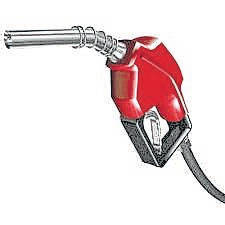
CINCINNATI – At 9.1 million b/d, U.S. gasoline demand recorded its second highest measurement since mid-March 2020, indicating that motorists are filling up more often.
This latest demand reading is the highest spring number released by the Energy Information Administration (EIA) in two years. In fact, it is only about 3% below the same week in 2019.
Both demand and supply have steadily increased in the past five weeks, but weekly gasoline supply builds are trending less substantial. On the week, supply only saw a 100,000 bbl build to 234.9 million bbl, most likely due to high consumer demand.
“The jump in demand to 9.1 million b/d combined with the small increase in supply pushed the national gas price average two cents more expensive on the week to $2.88,” said Jenifer Moore, AAA spokesperson. “This is the largest one-week national jump we’ve seen in five weeks.”
Ohio has the largest average weekly gas price increase (+12 cents) in the country at $2.82 per gallon. Overall, state average gas prices are up $1.44 compared to this time a year ago.
Cheaper crude oil prices, which are mostly pricing at less than $63/bbl, and stable and strong refinery utilization (85%) are contributing factors keeping pump price jumps incremental. On the week, 35 state averages increased with the majority seeing only one to three cent jumps.
Quick stats
• The nation’s top 10 largest weekly increases: Ohio (+12 cents), Delaware (+8 cents), Kansas (+5 cents), Nevada (+5 cents), Maryland (+4 cents), New Jersey (+4 cents), Montana (+4 cents), Idaho (+4 cents), Washington (+4 cents) and Michigan (+4 cents).
•The nation’s top 10 least expensive markets: Mississippi ($2.56), Texas ($2.58), South Carolina ($2.59), Louisiana ($2.60), North Carolina ($2.62), Alabama ($2.63), Oklahoma ($2.65), Missouri ($2.66), Arkansas ($2.68) and Tennessee ($2.68).
Market dynamics
At the close of Friday’s formal trading session, WTI increased by 71 cents to settle at $62.14. Although prices ended the day with an increase, supported by a weak dollar, the price of crude took a step back by approximately a dollar on the week.
Growing market concern that surging coronavirus infection rates in Asia may derail expectations for crude demand recovery helped to reduce prices. Additionally, EIA’s latest weekly report revealed that total domestic crude inventory increased by 600,000 bbl to 493 million bbl, contributing to downward pressure on crude prices.
If market concerns persist this week, crude prices could end the week lower again.
AAA provides automotive, travel, and insurance services to more than 62 million members nationwide and nearly two and a half million members in Ohio. For more information on joining or renewing a membership, visit www.AAA.com.


